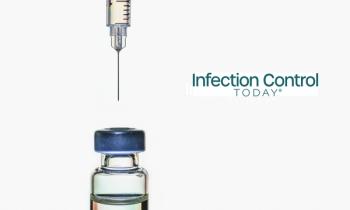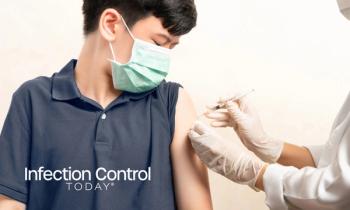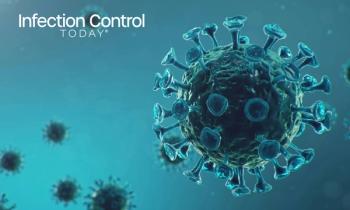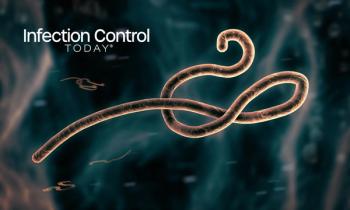
- Infection Control Today, October 2020 (Vol. 24 No. 08)
- Volume 24
- Issue 08
Practicing Infection Prevention in Isolated Populations: How the Navajo Nation Took on COVID-19
Much of the care for the spread-out and isolated patient population is home care. The hospital has a 3-person HIV team and about 6 public health nurses who visit patients in their homes. They all speak Navajo. (COVID-19 is Diko Ntsaaígíí-Náhást’éíts’áadah.)
When the first tentacles of the coronavirus disease 2019 (COVID-19) pandemic reached Navajo Nation—the Native American territory occupying more than 17 million acres in Arizona, Utah, and New Mexico—leaders President Jonathan Nez and Vice President Myron Lizer responded quickly. They instituted strict curfews, issued stay-home orders, and shut casinos down—even though those are central to the local economy.
They also ramped up testing and contact tracing. They had the highest test rate per capita in the country: As of August 15, more than 40%, or about 80,000 individuals of a 200,000 service population.1 By comparison, on August 13, the United States as a whole had a testing rate of 2.14 tests per thousand.2
President Nez and Vice President Lizer were proactive in every way they could think of. In fact, Nez declared COVID-19 a public health emergency on March 11, 2 days before President Donald Trump did. Nez and Lizer were urging people to wear masks in public even before the US Centers for Disease Control and Prevention (CDC) did, and they issued a public health emergency order to do so in mid-April.
Nonetheless, the Navajo Nation was hit devastatingly hard by the virus. In May, the Nation had the highest infection rate per capita in the country, surpassing the epicenter of New York: 2344 cases per 100,000 residents.3
On August 13, though, the population reported 48 consecutive days of fewer than 100 daily cases of COVID-19 reported and 13 consecutive days with under 50 daily cases.4 Last week the Navajo Health Command and Operations Center declared the Nation to be in Orange status, or “moderate-high restrictions”, in which most businesses are allowed to reopen with 25% maximum occupancy, and restaurants and banks are allowed to operate drive-through business (casinos and other places where groups gather are still closed).5
The Navajo leadership achieved this despite the fact that many Navajo live far from hospitals and clinics, about one third don’t have access to running water, and many live with extended families in small homes. Add to this a seriously debilitated infrastructure in the form of miles of dirt or gravel roads (70% of roads are in “poor or failing condition,” according to the 2016 Navajo Nation long-range transportation plan).6 There is also no electricity in many areas.7 In 2012, only about 60% of Navajo natives had landline phones; many now have cellphones but live miles from a tower8 (access has been improving since 2014, and has been accelerated due to the COVID-19 crisis).9
How do you handle infection prevention and control under extreme conditions—exacerbated by a nightmarish virus that has claimed hundreds of thousands of lives worldwide? Jonathan Iralu, MD, FACP, Indian Health Service (IHS) Chief Clinical Consultant for Infectious Diseases, Gallup Indian Medical Center (GIMC), and his staff are exemplars of tackling it promptly and effectively.
GIMC, located on the border of the Navajo Reservation, has one of the largest workloads in the IHS—250,000 outpatient encounters and 5800 inpatient admissions annually—and the largest staff of all Navajo Area IHS facilities. Its catchment area is roughly a 50-mile radius, but if patients need to contact an infectious disease specialist, they may need to travel up to 150 miles one way, often on those bad roads. Telehealth is difficult because of the technological obstacles.
Given those parameters, GIMC personnel had to be deliberate and practical—and they had to make dramatic shifts in the way they delivered care. Early on, they shut down the clinics to focus on the influx of people coming in with COVID-19. They also set up drive-up testing, including rapid testing, “really early,” Iralu says, in part to take the potential pressure off the “aging facility” (the hospital is about 60 years old). Patients go through a screening and triage is handled outside the hospital.
Staff also prepared to focus on patients who would require hospitalization—at 99 beds, GIMC is small (“but large for the IHS”). They had only 2 medical-surgical wards and a small intensive care unit. To get ready, they repurposed rooms that were formerly used for tuberculosis (TB) patients, plus some pre-op and office space. In early March they were short on supplies, like most of the country. So, they created a personal protective equipment committee to order, track, and project what the hospital’s needs would be.
Meanwhile, they had to factor in their regular patient responsibilities for a population rife with chronic health issues including diabetes, alcoholism, and cardiovascular disease. GIMC transferred staff into the inpatient and emergency departments and left a skeleton crew back in the clinics to handle emergencies and routine primary care.
Unlike many rural hospitals, GIMC delivers not only direct patient care, but it is also responsible for public health. Where another hospital might make referrals to the county Department of Health to do contact tracing investigations, for instance, Gallup staff members have to do that themselves.
Patient education—a critical part of managing the public health crisis throughout the country—is not always easy in an area on the wrong side of the “digital divide,” where fewer than half of the residents have access to high-speed Internet service.10 So GIMC healthcare providers have to make the most of every opportunity. In addition to public service information and social media posts, they do their educating at the drive-up testing sites, for instance, and have a follow-up system in which public health nurses do more education.
Iralu has worked at GIMC since 1994, with special interest in HIV, TB, and sexually transmitted disease (STD) care in rural communities. His research has focused on undifferentiated febrile illness in the American Southwest and on rural HIV care delivery. In the 1970s, the tribe, along with the IHS, created a TB treatment program using Navajo-speaking community health workers who made home visits to manage care and medications. About 14 years ago, Iralu says, he and his staff started doing the same with HIV care. Now they’re taking lessons learned from the established TB, HIV, and STD programs and translating those for this latest health challenge.
Necessarily, much of the care for the spread-out and isolated patient population is home care. The hospital has a 3-person HIV team and about 6 public health nurses who visit patients in their homes. They all speak Navajo (COVID-19 is Diko Ntsaaígíí-Náhást’éíts’áadah).
The home-care teams emphasize the importance of handwashing, of course. Although water may be in short supply in some places, Iralu says it hasn’t been an insurmountable problem. For one thing, “it’s been easy to get alcohol wipes.” He also points to volunteer groups that take water out into the isolated rural areas. Contrary to reports of lack of water being a major issue, he says, “it’s a bit of an exaggeration” to say so.
Another thing that they’ve done “beautifully,” he says, is to create “alternate facilities” to care for patients with COVID-19—albeit in a kind of counterintuitive way. When a member of a multigenerational family is diagnosed with COVID-19, the first idea might be to isolate that person in a different room from the rest of the family. “That’s really impractical,” Iralu says. So they do the opposite. They quarantine the healthy members in a hotel.
GIMC physicians Jennie Wei, MD, MPH, and Mia Lozada, MD, run the program, working in a federal/nonprofit/volunteer consortium to take care of people who have been exposed to the virus and have no other place to stay. More than 800 patients have been isolated in hotels since March.11 Lozada credits the program with helping to drive down the case numbers in Gallup.
Those kinds of culturally sensitive care solutions are important for all their patients, but particularly for Native American elders, who are vulnerable to the SARS-CoV-2 virus. Older people are highly valued in Native American culture, and protecting them is a high priority. “Elders carry tradition,” Iralu says. “We have to keep them safe.”
President Nez has also made this plain in his overall pandemic plans. “I challenge the Navajo people: Let’s protect [our elders] by staying home,” he said during a virtual town hall on June 9.12 “It’s our responsibility as family members.” Vice President Lizer echoed that, saying supporting elders benefits everyone. “Love for our elders means we all win.”
In the early days of what became a pandemic, Iralu and his colleagues were reassuring people that there were few cases. Then, as things worsened, they began advising extreme caution. They’re still advising caution. In an interview in July, Iralu expressed “cautious optimism” about managing the COVID-19 case numbers. He’s now concerned about what might happen as winter brings influenza, and how a combination of the 2 viruses might affect his hospital. There’s also the issue of neighboring states with conflicting rules and surges in cases. But overall, he says, he remains cautiously optimistic.
The pandemic has been good for something, too. “It has been really beautiful to see the staff rally together with single-minded purpose,” Iralu says. “We’re working better as a team now than ever in my 26 years here.”
JAN DYER is a writer and editor specializing in clinical topics. She lives in Suffern, New York.
- Navajo Department of Health. Dikos Ntsaaígíí-19 (COVID-19). Available at:
https://www.ndoh.navajo-nsn.gov/COVID-19 . Accessed 08-16-20. - Our World in Data. Statistics and Research. Coronavirus (COVID-19) Testing. Available at:
https://ourworldindata.org/coronavirus-testing#the-scale-of-testing-compared-to-the-scale-of-the-outbreak . Accessed 08-16-20. - Stoney A. Navajo Nation surpasses New York for highest infection rate in the US. Arizona Republic. May 19, 2020. Available at:
https://www.azcentral.com/story/news/local/arizona-breaking/2020/05/19/navajo-nation-passes-new-york-highest-coronavirus-infection-rate/5218748002/ . Accessed 08-16-20. - The Navajo Nation. Office of the President and Vice President. Nez-Lizer Administration issues guidelines and plan to carefully reopen the Navajo Nation with phased-in approach. Press release. Aug. 13, 2020. Available at:
https://www.navajo-nsn.gov/News%20Releases/OPVP/2020/Aug/FOR%20IMMEDIATE%20RELEASE%20-%20Nez-Lizer%20Administration%20issues%20guidelines%20and%20plan%20to%20carefully%20reopen%20the%20Navajo%20Nation%20with%20phased-in%20approach%20w%20health%20order.pdf . Accessed 08-16-20. - Navajo Department of Health. Public Health Emergency Order No. 2020-020. Public Health Emergency Order Implementing the Navajo Nation Reopening Plan and Declaring “Orange Status.” Aug. 13, 2020. Available at:
https://www.navajo-nsn.gov/News%20Releases/NNDOH/2020/Aug/NDOH%20Public%20Health%20Emergency%20Order%202020-020%20Dikos%20Ntsaaigii-19.pdf . Accessed 08-16-20. - Wilson & Co. 2016 Navajo Nation Long Range Transportation Plan. Final Plan. April 2016.Available at: https://www.wilsonco.com/sites/default/files/images/LRTP%20The%20Plan.pdf. Accessed 08-16-20.
- Morales L. For many Navajos, getting hooked up to the power grid can be life-changing. National Public Radio. May 29, 2019. Available at:
https://www.npr.org/sections/health-shots/2019/05/29/726615238/for-many-navajos-getting-hooked-up-to-the-power-grid-can-be-life-changing . Accessed 08-16-20. - Smithson S. 4G network creates opportunities on Navajo Nation. National Public Radio. Available at:
https://www.knau.org/post/4g-network-creates-opportunities-navajo-nation . Accessed 008-16-20. - Globe Newswire. Choice NTUA Wireless provides greater speed & bandwidth to the Navajo Nation. Press release. May 13, 2020. Available at:
https://www.globenewswire.com/news-release/2020/05/13/2033022/0/en/Choice-NTUA-Wireless-Provides-Greater-Speed-Bandwidth-to-the-Navajo-Nation.html . Accessed 08-16-20. - Groetzinger K. Navajo families without internet struggle to home-school during COVID-19 pandemic. April 22, 2020. Available at:
https://www.kunc.org/npr-news/2020-04-22/navajo-families-without-internet-struggle-to-home-school-during-covid-19-pandemic . Accessed 08-16-20. - @PIH. Dr. Jennie Wei discusses the plan to begin providing safe spaces for COVID-19 positive people in Gallup, NM to isolate safely, which led to organizing to turn hotel rooms into isolation shelters for COVID-19 in March. This plan expanded to multiple hotels in April.
@IHSgov .https://twitter.com/PIH/status/1283482283375243271 . Posted July 15, 2020. - Reinhart K. ‘It just feels like they’re forgotten’: Navajo women mobilize to protect elders from COVID-19. Cronkite News. Arizona PBS. Aug. 13, 2020. Available at:
https://cronkitenews.azpbs.org/2020/08/13/covid-indian-country-navajo-women-elders/ Accessed 08-16-20.
Articles in this issue
about 5 years ago
Bug of the Month: I Can Be Deadly for Cystic Fibrosis Patientsabout 5 years ago
How This Vascular Access Nurse Relies on an Infection Preventionistabout 5 years ago
Infection Preventionists Need to Monitor PPE Useabout 5 years ago
Infection Preventionist Guide for Dealing With Flu and COVID-19about 5 years ago
Why a COVID-19 Vaccine Might Not Be the Answer We’re Hoping Forabout 5 years ago
Infection Preventionists Might be Needed in SchoolsNewsletter
Stay prepared and protected with Infection Control Today's newsletter, delivering essential updates, best practices, and expert insights for infection preventionists.






